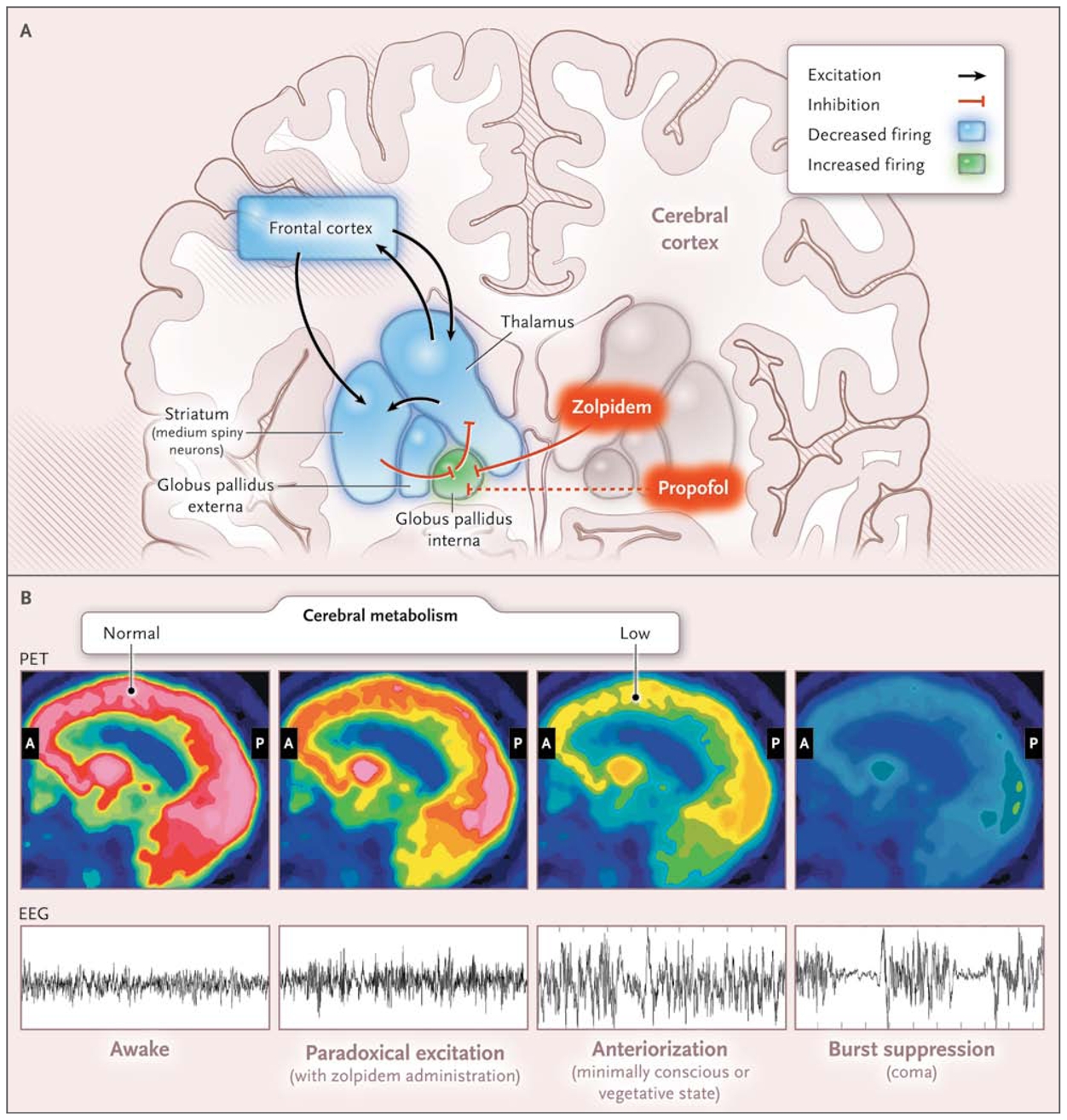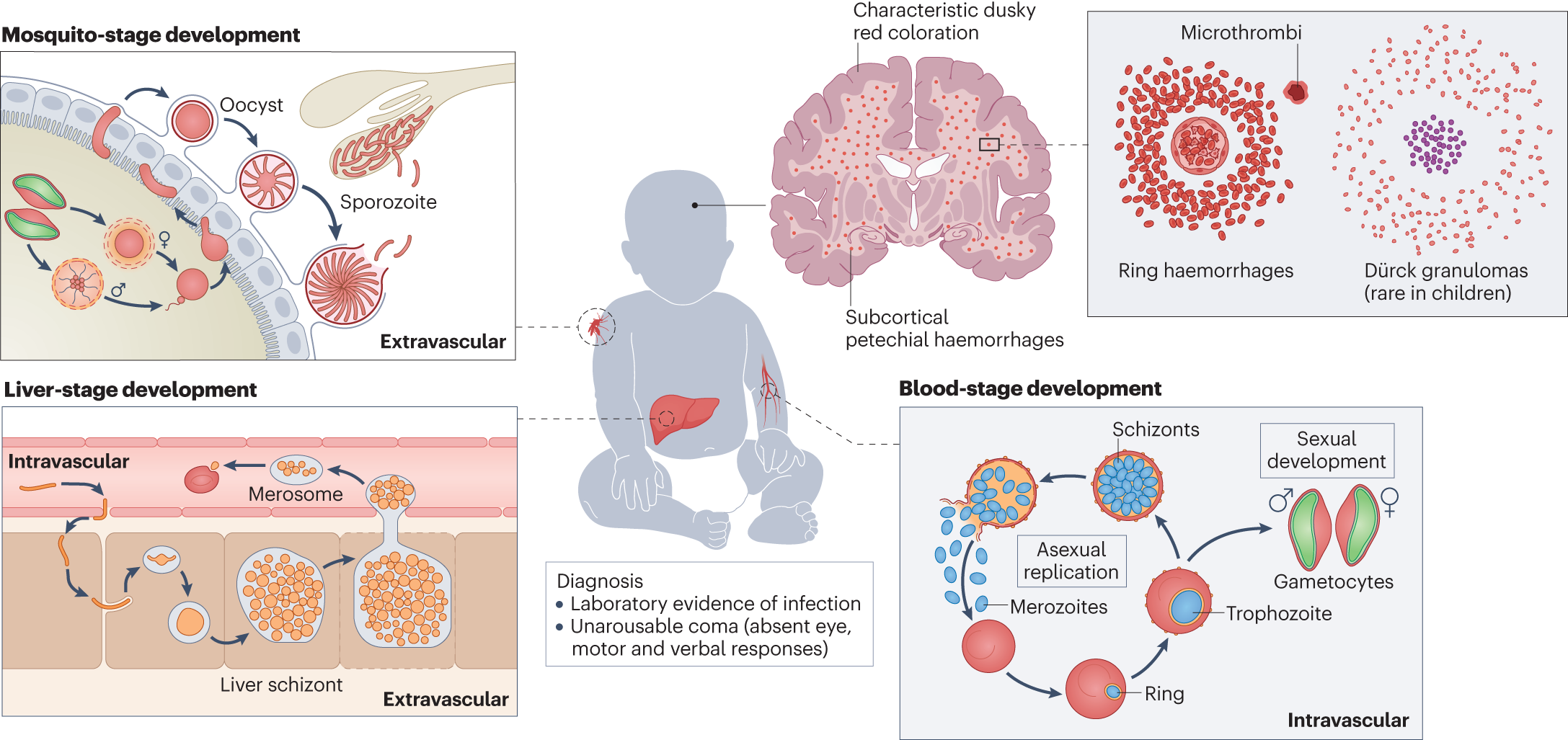

What Is a Coma?
A coma is a prolonged state of unconsciousness. During a coma, a person is unresponsive to their environment. The person is alive and looks like they are sleeping. However, unlike in a deep sleep, the person cannot be awakened by any stimulation, including pain.

A coma is a prolonged state of unconsciousness. It is caused by an injury to the brain that can be due to increased pressure, bleeding, loss of oxygen, or buildup of toxins. The injury can be temporary and reversible but can also be permanent and lead to death.
Coma Causes
A coma is caused by an injury to the brain. Brain injury can be due to increased pressure, bleeding, loss of oxygen, or buildup of toxins. The injury can be temporary and reversible. It also can be permanent.
More than 50% of comas are related to head trauma or disturbances in the brain’s circulatory system. Problems that can lead to a coma include:
- Anoxic brain injury: This is a brain condition caused by total lack of oxygen to the brain. Lack of oxygen for a few minutes causes cell death to brain tissues. Anoxic brain injury may result from heart attack (cardiac arrest), head injury or trauma, drowning, drug overdose, or poisoning.
- Trauma:Head injuries can cause the brain to swell and/or bleed. When the brain swells as a result of trauma, the fluid pushes up against the skull. The swelling may eventually cause the brain to push down on the brain stem, which can damage the reticular activating system (RAS)—a part of the brain that’s responsible for arousal and awareness.
- Swelling: Swelling of the brain tissue can occur even without distress. Sometimes, lack of oxygen, electrolyte imbalance, or hormones can cause swelling.
- Bleeding: Bleeding in the layers of the brain may cause a coma due to swelling and compression on the injured side of the brain. This compression causes the brain to shift, causing damage to the brainstem and the RAS (mentioned above). High blood pressure, ruptured cerebral aneurysms, and tumors are nontraumatic causes of bleeding in the brain.
- Stroke: When there is no blood flow to a major part of the brain or loss of blood accompanied with swelling, a coma can occur.
- Blood sugar: In people with diabetes, a coma can occur when blood sugar levels stay very high. That’s a condition known as hyperglycemia. Hypoglycemia, or blood sugar that’s too low, can also lead to a coma. This type of coma is usually reversible once the blood sugar is corrected. However, prolonged hypoglycemia can lead to permanent brain damage and persistent coma.
- Oxygen deprivation: Oxygen is essential for brain function. Cardiac arrest causes a sudden cutoff of blood flow and oxygen to the brain, called hypoxia or anoxia. After cardiopulmonary resuscitation, survivors of cardiac arrest are often in a coma. Oxygen deprivation can also occur with drowning or choking.
- Infection: Infections of the central nervous system, such as meningitis or encephalitis, can also cause a coma.
- Toxins: Substances that are normally found in the body can accumulate to toxic levels if the body fails to dispose of them correctly. As an example, ammonia due to liver disease, carbon dioxide from a severe asthma attack, or urea from kidney failure can accumulate to toxic levels in the body. Drugs and alcohol in large quantities can also disrupt neuron functioning in the brain.
- Seizures: A single seizure rarely produces coma. But continuous seizures—called status epilepticus—can. Repeated seizures can prevent the brain from recovering in between seizures. This will cause prolonged unconsciousness and coma.

Types of Coma
Types of coma can include:
- Toxic-metabolic encephalopathy. This is an acute condition of brain dysfunction with symptoms of confusion and/or delirium. The condition is usually reversible. Causes of toxic-metabolic encephalopathy are varied. They include systemic illness, infection, organ failure, and other conditions.
- Persistent vegetative state. This is a state of severe unconsciousness. The person is unaware of their surroundings and incapable of voluntary movement. With a persistent vegetative state, someone may progress to wakefulness but with no higher brain function. With persistent vegetative state, there is breathing, circulation, and sleep-wake cycles.
- Medically induced. This type of a temporary coma, or deep state of unconsciousness, is used to protect the brain from swelling after an injury—and allow the body to heal. The patient receives a controlled dose of an anesthetic, which causes lack of feeling or awareness. Doctors then closely watch the person’s vitals. This happens only in hospital intensive care units (ICUs).
- Diabetic. People with uncontrolled diabetes, whose blood glucose (sugar) levels are too high or too low, can fall into a coma. This is a life-threatening complication. If your blood sugar is too high for too long (hyperglycemia), it must be brought down with insulin. If not, you can develop ketoacidosis, which can lead to a coma. If you have too low blood sugar (hypoglycemia), your brain can’t get enough energy to function properly, eventually causing a coma. Both types of coma can lead to death if not treated quickly.
- Anoxic brain injury. This type of a coma is caused by lack of oxygen to the brain. It could be caused by a cardiac arrest, choking, drowning, and many other events. If the brain doesn’t receive enough oxygen, brain cells begin to die.

Coma Symptoms
Although it may seem like someone in a coma is sleeping, there are signs and symptoms that tell you that it is more than just sleep. They include:
- They are unable to be woken up.
- They have no eye response (deep coma). If you lift their eyelids, their eyes don’t react by blinking or moving.
- Their pupils don’t dilate (widen) when you lift their eyelids and shine a light into their eyes.
- They have no motor responses (deep coma). If you apply pressure on a part of their body, they don’t pull away or respond.
- They have irregular breathing.
- Their blood pressure may be higher or lower than normal, depending on the coma cause.
- Their muscles may contract (pull in) in positions that seem unnatural.
What happens when you’re in a coma
No one knows for sure what is happening in someone’s mind when they are in a coma, but there is some evidence that suggests they may be able to hear sounds, like people talking, machinery around them, and even music. Aside from what might be going on in the brain, we do know that people in a coma:
- Don’t react to stimuli around them, like if you lift their arm or kiss their cheek or a heavy object crashes to the floor.
- Don’t react to pain, like if you pinch their arm.
- Can’t control their muscles, so the muscles can tighten and contract. A common example is when their hand curls up into a fist.
- Do continue with automatic functions, those you don’t control, such as urinating, moving their bowels, and breathing.
- Cannot eat or drink, so they must get nutrition through intravenous (IV) or feeding tubes.
Coma Diagnosis
There are many causes of a coma. Doctors need to not only diagnose that the person is actually in a coma but also diagnose why they are.
While it may seem obvious that someone is in a coma (no response, but breathing), doctors need to determine what level of the coma is.
- Do they respond if the doctor calls their name?
- Are they breathing irregularly, too fast, or too slow?
- When the doctor applies stimulation, such as a painful pinch or rub on the sternum (between the ribs), do they respond?
- If the doctor uses a reflex hammer in certain joints, like the knee or elbow, does the person’s body react as it should?
- Are their limbs in an unnatural position?
- Do their eyes react when the doctor lifts the eyelids? Do their pupils widen if the doctor shines a light into their eyes?
Sometimes, doctors can discover the coma cause quickly, while other times, it may take several tests. Family and friends are often helpful in this part of the diagnosis. Doctors may ask questions like:
- How long has the person been unresponsive?
- How was the person acting before the coma? Did they have headaches, were they vomiting, had they hit their head, or have any other symptoms or warning signs?
- Did the person become unconscious quickly or did it happen gradually?
- Has this ever happened before?
- What is the person’s medical history?
- Does the person take prescription drugs, recreational drugs, or any type of supplement?
After the physical examination and learning about what led up to the coma, the doctor will order tests based on what they think may have happened. These tests can include:
Blood tests. These are to check:
- Blood sugar levels
- Complete blood count (to check for infection and other possible causes)
- Liver function
- Thyroid function
- Kidney function
- Drug levels
- Alcohol levels
- Carbon monoxide levels
Urine test. A urine test may tell the doctor if there are any toxins that could have caused the coma, as well as any infections.
Spinal tap or lumbar puncture. The doctor may want to take a sample of fluid from the spine to send to a lab to check for infection.
EKG. If the doctor suspects heart disease, an EKG may show irregular heartbeats.
Imaging tests. These tests allow the doctor to look at organs to see if there is any damage in the brain, such as a brain bleed or a tumor. Tests could include:
- Chest X-ray if heart disease is possible
- CT scan
- MRI
- Electroencephalogram, which detects brain waves and can check for diseases like epilepsy
Glasgow Coma Scale
Part of the neurological exam includes the Glasgow Coma Scale, sometimes called the Glasgow Coma Score. Once the doctor calculates the score, staff will continue to do tests at regular intervals to see if the score stays the same, improves, or worsens.
To calculate the scale, the doctor tests for eye response, motor response, and verbal response. Each test is given a number. The lower the number, the worse the condition.
For the eyes:
- You can open your eyes on your own and keep them open: 4 points.
- You only open your eyes if you’re told to: 3 points.
- You only open your eyes if you feel pressure or pain: 2 points.
- You don’t open your eyes at all: 1 point.
Your ability to move:
- You move on your own and can follow instructions: 6 points.
- You move on purpose if someone pushes or presses against you: 5 points.
- You only move reflexively (not thinking about it) if someone presses against you: 4 points.
- You flex your muscles if someone presses or puts pressure against a part of your body: 3 points.
- You extend your muscles if someone presses or puts pressure against a part of your body: 2 points.
- You don’t respond at all to pressure: 1 point.
For talking:
- You know where you are, the day, your name, and so on, and answer appropriately: 5 points.
- You can answer questions but not always correctly. You’re confused: 4 points.
- Your responses don’t make sense, even though you are speaking clearly enough for your words to be understood: 3 points.
- You can only make sounds or noises, no clear words: 2 points.
- You can’t make any sounds: 1 point.
Coma Treatment
A coma is a medical emergency. Early treatment may limit the amount of damage to the brain and rest of the body. Call 9-1-1 for emergency help if you find someone in a coma or someone who is losing consciousness.
Emergency medical technicians or paramedics will evaluate how well the person is breathing and provide assistance if needed. They can start an IV to provide fluids and give certain types of medications, such as glucose if the person’s blood glucose level is too low, anti-seizure medications, or naloxone (Narcan) if they suspect an opioid overdose.
The emergency team will also ask you about what happened before the person lost consciousness, what medications they take, and other questions that might give them an idea of what caused the coma.
After the person arrives at the hospital, treatment continues as the staff does tests to determine the cause. Prompt medical attention is vital to treat potentially reversible conditions. For example, if there is an infection that’s affecting the brain, antibiotics may be needed. Surgery may also be necessary to relieve the pressure on the brain due to swelling or to remove a tumor.
Certain drugs may also help relieve the swelling.
People in coma are often looked after in an ICU, although they may be moved to another unit if they are stable. Those in the ICU may require full life support until their situation improves. If the person needs continual breathing assistance with a ventilator, they will likely get a tracheostomy, often called a trach.
Supportive care for someone in a coma is meant to keep them as comfortable as possible and to prevent complications. These support measures include:
Nutrition. Although the person is in a coma, they still need good nutrition and adequate fluids. This means they will likely need a feeding or gastric tube that will supply the liquid nutrition directly to the stomach. Initially, the tube will be inserted through the nose to the stomach, but may be surgically inserted into the stomach through the abdomen.
Skin care. Because the person can’t move on their own, they are at a high risk of pressure injuries (bed sores). For this reason, they must be:
- Moved from one side to their back and then to the other side on a regular basis to reduce pressure
- Washed and dried well, especially after a bowel movement or if they are sweating
- On a special mattress or mattress topper to ease the pressure on the skin
Bowel and bladder. Someone in a coma has no control over their bowel or bladder. Adult briefs help keep the person clean, while usually, a urinary catheter helps drain the urine from the bladder. Urinary catheters do put people at a higher risk of a urinary tract infection (UTI), so the area must be kept clean.
Muscle and joint contractures. Limiting muscles from contracting, causing joints to turn in, is an important part of care. Regular “range of motion” exercises are simple exercises that guide the limbs through natural motions. Splints may also help the joints from contracting.
Coma Recovery
Coma recovery depends on the coma cause, how long the person has been in a coma, and other factors.
How long does a coma last?
Most people who recover from a coma do so within a few minutes to a few weeks. If it lasts longer, then they may go into what is called a lasting or persistent vegetative state.
What’s the prognosis for a coma?
It can be very difficult to predict recovery when a person is in a coma. Every person is different, and it is best to consult with your doctor. As we would expect, the longer a person is in a coma, the worse the prognosis. Even so, many patients can wake up after many weeks in a coma. However, they may have significant disabilities.
Some people are left with lasting disabilities, such as being unable to walk or speak. People who are left with disabilities that need rehabilitation might work with physical therapists, occupational therapists, or speech therapists, for example. They may also need a psychologist or other mental health professional to help them process what happened to them and how their life is now that they have woken from the coma.
Waking up from a coma
Unlike what you may have seen on TV or in a movie, people rarely suddenly wake up from a coma. It is usually a slower, gradual process.
Signs of coming out of a coma
For most people, there are four stages to a coma, and there is no way of knowing how long anyone will be in any stage. Stage I is the coma itself. This is followed by:
- Stage II: In this stage, the person may start responding to some commands, such as to open their eyes. They may react to sound, like your voice or a door opening and closing. If they have pain, such as when someone gives and injection or takes blood, their arm may flinch or they may try to pull away.
- Stage III: This stage is when the person is more awake but is confused and may be agitated. You may see a personality change. A normally sweet, quiet person may start to yell or swear and try to hit out. If the person becomes a danger to themselves (hitting out could cause them to hit their bedrail or pull out IVs or other tubes), the staff may have to put soft restraints on their wrists.
- Stage IV: This last stage is when the person is completely awake and can do simple routine things, such as sitting up and eating. However, if the recovery is only partial, they may have difficulty performing these tasks.
Ranchos Scale
As someone recovers from a coma, doctors frequently use the Ranchos Scale to measure their progress. The full name is The Rancho Los Amigos Scale. They may use it alone or along with the Glasgow Coma Scale.
The original Ranchos Scale had eight stages. The revised one, currently in use, has 10:
- There is no response to stimulation, such as rubbing on the sternum.
- There are some responses, but they are either inconsistent, changing to the same stimuli, or they are the same response to any type of stimuli.
- The responses are a bit more consistent, and the person can respond to family and friends.
- The person is agitated and confused. They have no short-term memory.
- The person remains agitated but can respond to simple commands. They cannot start a task on their own but can complete a simple one if told what to do. Memory is still bad.
- Confusion remains but it’s not as bad, and they are able to follow simple instructions consistently. They may be able to perform familiar simple tasks but not new ones. They don’t yet understand that they have some problems, and this can be a safety risk. For example, they may insist that they can walk when they can’t.
- Much less help is needed. The person can perform the tasks they did before they went into a coma but still may be confused sometimes. They understand that they were in a coma but still may not understand their limitations and can still be a safety risk. They might start to take part in social events.
- They are no longer confused and can carry out many tasks. They may understand their limitations, respond properly to different events, and have an improved memory. At this point, however, they may start to get depressed, anxious, or angry.
- They’re much more independent now but can’t always see ahead to anticipate problems. They may have a low frustration threshold and be depressed.
- At this point, the person is almost completely independent, able to make decisions, and manage on their own.
Coma Complications
When someone is in a coma, their body continues to function, but complications can occur. Some of the more common ones include UTIs, pneumonia, bed sores, and blood clots.
If someone in a coma develops complications, this could affect their prognosis. For example, blood clots could go to the lung and cause a pulmonary embolism or to the brain and cause a stroke. A UTI, infections in a bed sore, or pneumonia could cause sepsis.
Ultimately, a coma can lead to a persistent vegetative state, brain death, or death.
Takeaways
A coma is caused by an injury to the brain. Brain injury can be due to increased pressure, bleeding, loss of oxygen, or buildup of toxins. The injury can be temporary and reversible. It also can be permanent.
A coma is a medical emergency. Early treatment may limit the amount of damage to the brain and rest of the body. Call 9-1-1 for emergency help if you find someone in a coma or someone who is losing consciousness.
Coma FAQs
How long can you stay in a coma?
A coma can last anywhere from a few minutes to a few weeks. Although there can be exceptions, longer coma generally lead to a persistent vegetative state or brain death.
What are the six types of coma?
The different types of coma are:
- Toxic-metabolic encephalopathy
- Persistent vegetative state
- Medically induced
- Diabetic
- Anoxic brain injury
Sometimes, people call brain death the sixth type of coma. While this is technically wrong (if someone is brain dead, it is irreversible, and there is no chance of the person waking up), it is understandable that it may seem easier to say that a loved one is in a coma.
What are the signs of coma patients waking up?
A coma patient who is waking up may show signs of responding to sound or touch and then gradually continue waking up. People waking from a coma often are agitated and confused for a while as their body tries to process what has happened. Their personality may change during this period.




